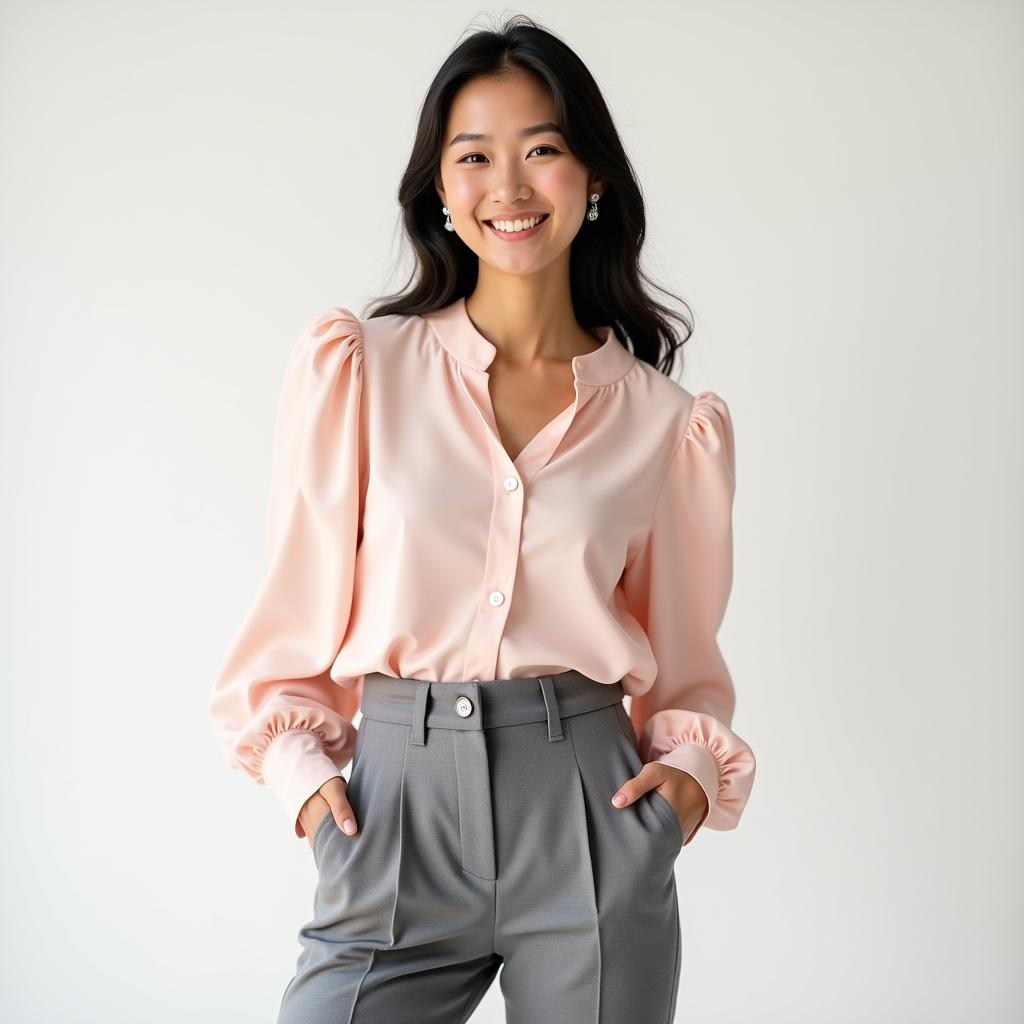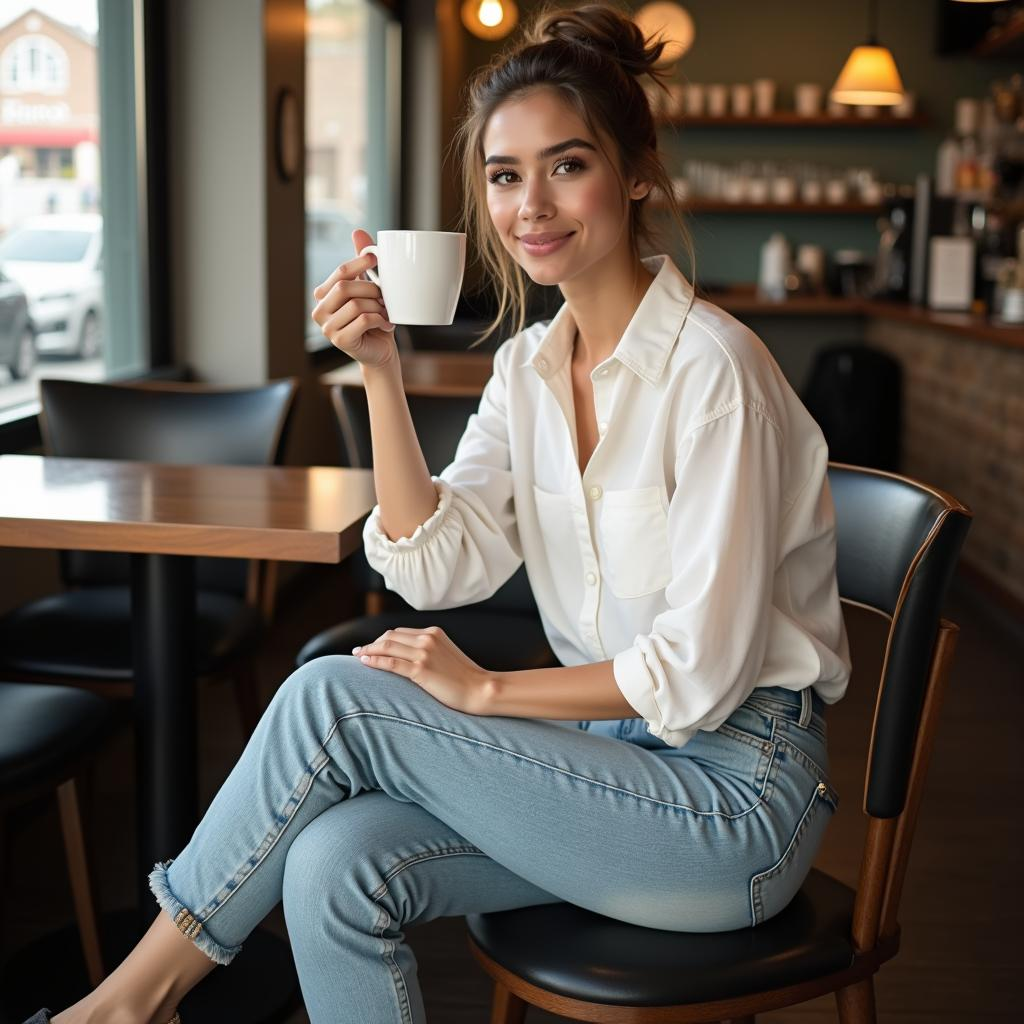Mastering Business Casual: A Comprehensive Guide to Chic and Professional Style
Business casual has evolved into a staple in the modern wardrobe, merging professionalism with comfort and personal expression. This guide delves into the origins of business casual, essential pieces, styling tips, celebrity inspirations, and how to adapt this versatile style for all body types and seasons.

Origins of Business Casual
The term “business casual” emerged in the late 20th century as workplaces began to embrace more relaxed dress codes. As companies prioritized employee comfort and individuality, the rigid suit-and-tie attire shifted toward a more approachable and flexible style. The aim was to create an environment that fosters creativity while maintaining a level of professionalism. Today, business casual is widely accepted across various industries, particularly in tech, creative fields, and startups, allowing employees to express their personal style without compromising professionalism.

Essential Fashion Pieces for Business Casual
To curate a business casual wardrobe, it’s essential to invest in versatile pieces that can be mixed and matched. Here are some must-haves:

- Tailored Blazers: A well-fitted blazer instantly elevates any outfit. Opt for classic colors like navy, black, or gray, or experiment with seasonal shades to add a fun twist.
- Crisp Button-Up Shirts: These are foundational elements of any business casual outfit. Choose solid colors or subtle patterns for a polished look.
- Chic Trousers: High-waisted trousers or tailored pants in neutral colors provide a sophisticated base. Consider fabrics like cotton, wool, or blends that offer comfort and style.
- Midi or A-Line Skirts: These skirts strike the perfect balance between professional and feminine. Opt for classic patterns like plaid or solid colors for easy pairing.
- Stylish Footwear: Shoes can make or break an outfit. Invest in a pair of comfortable yet chic heels, loafers, or ankle boots that complement your look.
- Accessories: Minimalistic jewelry, structured bags, and belts can enhance any outfit, adding a personal touch without overwhelming simplicity.
Styling Tips for Business Casual
- Layer Wisely: Combine structured pieces, like blazers, with softer fabrics, such as blouses or flowy dresses, to create a balanced look.
- Play with Color and Patterns: Don’t shy away from color. Integrate subtle patterns or vibrant hues to express your personality while maintaining professionalism.
- Fit is Key: Ensure all clothing fits well—neither too tight nor too loose. Tailoring can make a significant difference in appearance.
- Seasonal Adaptation: In colder months, incorporate layers like turtlenecks under blazers or pair skirts with tights. In warmer weather, opt for lighter fabrics and breathable materials.
- Personal Touch: Add unique accessories that reflect your style, such as a statement necklace or a vibrant scarf, to stand out while keeping it professional.
Celebrity Inspirations
Many celebrities and influencers embody the business casual style, showcasing how to blend professionalism with personal flair. Think of Emma Watson, known for her tailored pieces and chic ensembles, or Meghan Markle, who often opts for elegant blazers paired with fitted trousers. Their styles exemplify how to navigate the business casual aesthetic while maintaining a polished and sophisticated look.

Adapting Business Casual for Different Body Types
Business casual is inclusive and can be adapted to suit various body types. Here are some tips: – Pear Shape: Highlight the waist with fitted tops and A-line skirts, and opt for darker colors on the bottom to create balance. – Apple Shape: Choose structured blazers that define the shoulders and create a streamlined silhouette, paired with straight-leg trousers or skirts that flow. – Hourglass: Emphasize curves with tailored pieces that hug the body, including fitted dresses or pencil skirts. – Rectangle: Create curves by layering with belts and choosing pieces that add dimension, such as ruffled tops or peplum blouses.

Seasonal Styling for Business Casual
Spring/Summer
In warmer months, embrace lighter fabrics such as cotton and linen. Opt for short-sleeved blouses or sleeveless tops paired with tailored shorts for a chic look. Florals and pastel colors can add a refreshing touch.

Fall/Winter
Layering becomes essential during colder months. Utilize heavier fabrics like wool and cashmere for blazers and trousers. Incorporate cozy scarves and stylish coats to keep warm while maintaining sophistication.

Conclusion
Business casual is more than just a dress code; it is an expression of individual style within a professional environment. By understanding the origins, essential pieces, and styling tips, you can master this versatile look. Remember to adapt your outfits to reflect your personal style while considering body types and seasonal changes. With the right approach, you can navigate the business casual landscape with confidence and flair.

Leave a Reply